Best Non Perishable Foods (For Home Use or Donations)
This post may contain affiliate links. Read my full disclosure here.
When you’re stocking your own pantry or helping others in need, non perishable foods should be on your shopping list. These foods are great for emergencies when the power goes out, for camping, or simply for planning ahead. (Food prices almost always go up, not down.)
Table of contents
We’ll help you choose the best non perishable foods that last for months (or years). Plus, we have storage and organization tips, and a printable list of non perishable foods with estimated shelf life.
What is Considered a Non Perishable Food Item?
Non Perishable Foods are safe to eat for long periods of time without refrigeration. They are also known as “shelf stable foods”.
Some foods can last a few weeks to months on the shelf. Others can last for months. The longest last 10 to 20 years or more, such as freeze dried food or military MREs.
Note: In spite of some silly prepper shows might say, it is not recommended to live off of nothing but MREs for an extended period of time. They are nutrient dense, but can be hard on your guts.
A young reporter took the 21 day “nothing but MREs challenge” in 2016.
He wrote, “I would alternate between vicious cycles of spending hours in the bathroom and then not being able to go at all.”
Storage
Non-perishable foods don’t require refrigeration, but are best kept cool and dry. If it sits on a shelf in the grocery store, it’s safe on the shelf in your home.
Temperature: Store products at less than 75°F (24°C) or lower, if possible. If storage temperatures are higher, rotate your food to maintain quality.
Moisture: Keep food storage areas dry. Keep containers off the floor to allow for air circulation.
Light: Keep food in opaque containers out of direct sunlight.
Insects and rodents: Protect food stored in foil pouches, cans, jars and bottles from rodent and insect damage.
Keep air out. Store your food in meal sized portions, or a package size you can use up in less than a week once opened. If you buy in bulk, reseal in smaller packages.
Air is the enemy of long term food storage. Use vacuum sealed containers or Mylar for longer shelf life. Oxygen absorbers and/or vacuum sealing provide the longest shelf life.
See “Preparedness Storage – Finding Room and Keeping it Safe and Sound” for more storage tips.
Shelf Life of Non Perishable Foods
The following tables give shelf life estimates for an assortment of foods. These estimates vary widely, depending on which reference you use, so we opted for more conservative estimates.
Start with the “best by” date, but use some common sense. If salt has been hanging around in the earth for thousands of years, it’s not going to go bad sitting in your pantry.
Do not use food with obvious signs of spoilage, like bad odors or bulging containers.
Get the Printable PDF Version of the Shelf Life Chart Here
General Pantry Items
| Non Perishable Food | Est Shelf Life | Cost | Notes |
| Water | FOREVER | Low | Stored water might need filtering if container rusts or leaches flavor. For emergencies, store one gal of water per day per person. |
| Sugar, Salt, Honey | FOREVER | Low to High | Use in cooking and as spices and sweetener. Sugar/Honey can also be used for wound treatment. |
| Real Maple Syrup (without corn syrup) | 1yr to Indefinite | High | Unopened and stored in a glass jar in a cool dry place it will store indefinitely. (no corn syrup or artificial flavoring) |
| Maple Flavored Syrup (with corn syrup) | 4 months to 1yr | Low to Medium | Artificial flavoring will break down, as will the plastic bottle. It will still be edible past the best by date. |
| Ground Pepper | 6mo-2yrs | Low | Already ground pepper. Storing in a freezer helps keep the flavor. |
| Peppercorns | 1-4+yrs | Low | Grind your own pepper. Store in #10 or Mylar with oxygen absorber |
| Onion and Garlic Powder | 2-4 yrs | Medium | Store in Mylar bags and keep airtight – flavors decrease over time |
| Pure Vanilla Extract | Indefinite | Medium to High | |
| Imitation Vanilla Extract | 2-4yrs | Low- Medium | |
| Vanilla Beans | 6mo-1yr | High | |
| Chocolate, Milk Choc Chips, Dark Choc Chips | 6mo-2yrs, 1-3yrs | Medium | Best to store between 54°F and 61°F |
| Cocoa Powder | 1-4 yrs | Medium | 3mo-1yr once opened (varies based on fat content) |
| Pancake Mix (Store) | 1 yr | Low | Repackage in Mylar bag with an oxygen absorber to last 5 – 10yrs |
| Pancake Mix (no oxygen) | 5-20+ yrs | Med- High | #10 can or Mylar bag with oxygen absorber |
Fats and Oils
| Non Perishable Food | Est Shelf Life | Cost | Notes |
| Olive Oil | 8-20mo | Med | Flavor fades as it ages |
| Peanut Oil | 1-2yrs | Med | |
| Refined Coconut Oil | 12-18mo | Med | Does not have coconut taste |
| Virgin Coconut Oil | 2yr-5yr | Med | Still has coconut taste, but stores much longer |
| Canola or Vegetable Oil | 2yrs | Low | |
| Tallow (animal fat) | 1-3yrs | Med- High | Store better with refrigeration |
Would you like to save this?

Sources of Protein, Including Plant Based, Meals and Soups
| Non Perishable Food | Est Shelf Life | Cost | Notes |
| Canned Beans: Pinto Adzuki Blackeye Garbanzo Kidney Lentils Lima Red and Soy | 2-5+yrs | Low | |
| Dried Beans: Pinto Adzuki Blackeye Garbanzo Kidney Lentils Lima Red and Soy | 30+ yrs | Low | Requires rehydrating and cooking to eat |
| Butter | 3mo fridge 1yr freezer | Low-Med | buy on sale and store in freezer |
| Ghee (clarified butter) | 3-5yrs | Med | optionally canned at home |
| Peanut Butter | 3-9 months(less if warm) | Medium | Can be eaten directly; longer if lower fat count |
| Nut butters | 9 months from jarring | Medium | varies with fat content |
| Raw nuts and seeds | 1month to 2yrs | Medium | 1-9mo in pantry, fridge 1yr and up to 2yrs in the freezer. 68F or cooler is best. Store in airtight container. Some nuts like pistachios have a shorter shelf life. |
| Canned fish and poultry | Up to 5 years less if warm | Medium to high | Varies with packaging and fat content and in a cool dry place |
| Canned Tuna | 18mo to 5yrs | Medium to high | Varies with packaging and fat content |
| Freeze Dried Chicken, beef and hamburger | 10-30 yrs | High | #10 cans or Mylar bags |
| Freeze dried meals, in most cases just add hot water | 10-30 yrs | High | From: MountainHouse, AugusonFarms, and Nutristore others |
| Canned Soup (tomato based) | 18months | Low | |
| Canned Soup (non tomato based) | 5yrs | Low to medium | |
| Freeze dried soup | 10-30yrs | High |
Fruits and Vegetables
| Non Perishable Food | Est Shelf Life | Cost | Notes |
| Canned vegetables | 2-5 yrs | Low | |
| Canned fruits | 1-2 yrs | Low- Medium | peaches, berries, apples, grapefruit or pineapple |
| Dried Fruit / Vegetables | Up to 1yr | Medium | Can be eaten directly but generally rehydrated and used in a meal |
| Freeze Dried Fruit / Vegetables | 10+ yrs | high | Can be eaten directly but generally rehydrated and used in a meal |
| Freeze Dried Bananas, Apples, or raspberries | 10+ years | Medium to high | Can be eaten directly or used in a recipe |
| Raisins | 1yr, 6 months opened | Med | |
| Supermarket Potatoes | 2-4 weeks | Low | Will store longer in a mesh bag in a dark, 95% humid and cool 45-50F place. |
| Garden Potatoes | 6-10mo | Low | Stored in a root cellar. Specific varieties store better our favorites are Kennebec & Yukon Gold. |
| Sweet potatoes | 3-5 weeks | Low to medium | |
| Minced Garlic | 3wk to 3mo | Low | Normally stored in oil |
| Supermarket Garlic | 6mo | Low | |
| Garden Garlic | 4mo-12mo root cellar | Low | There are Hardneck and Softneck varieties. Both store at 58F in 45% humidity (softneck dont make scapes but store a bit better) |
| Supermarket Onions | 6 weeks | Low | |
| Garden Onions | 3mo – 9mo root cellar | Low | Yellow onions Stuttgarter Reisen and Yellow of Parma our our favorite storing onions |
| Winter Squash | 1 month to 1 year | Low | Storage depends on variety, growing conditions, and curing |
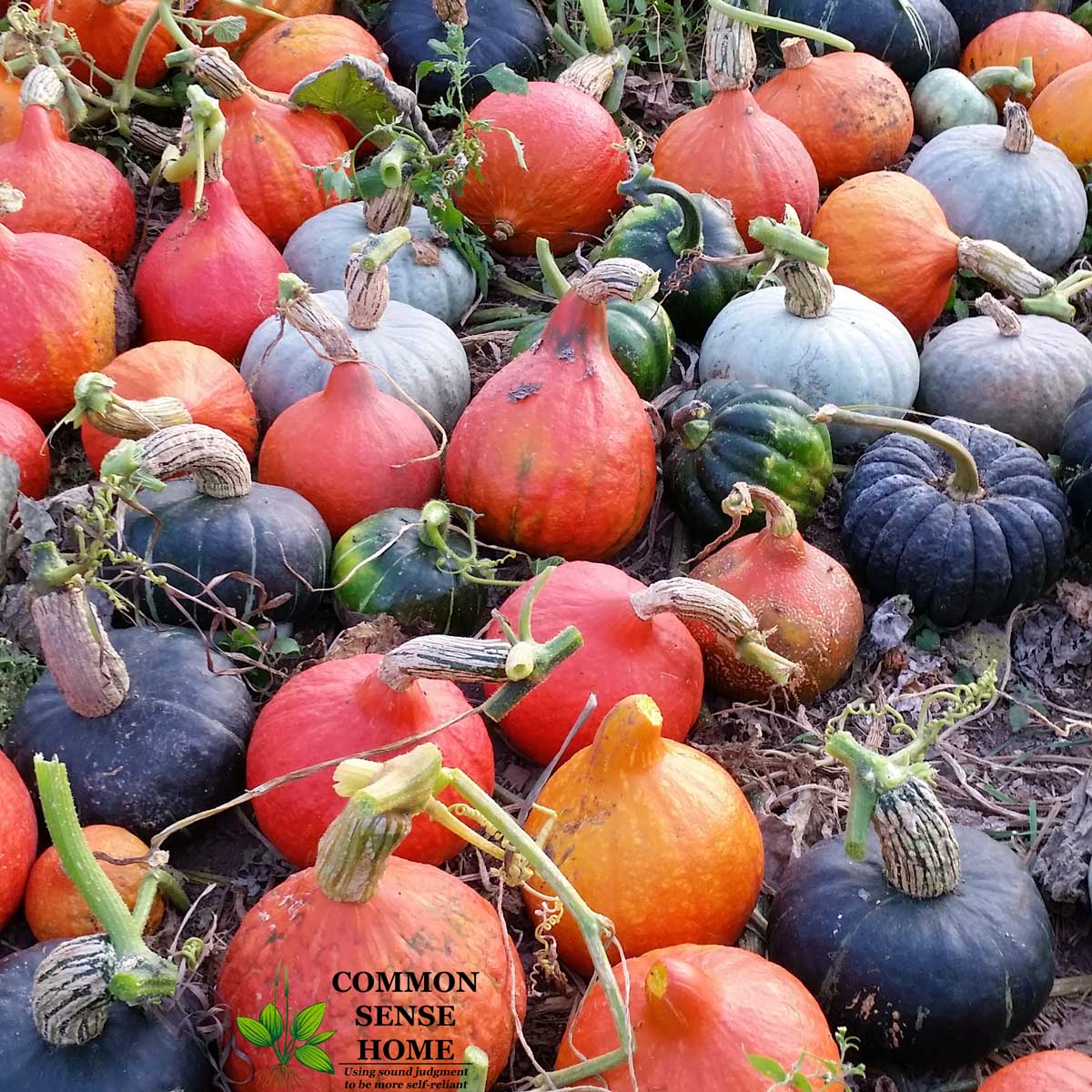
Grains
| Non Perishable Food | Est Shelf Life | Cost | Notes |
| White Rice | 4-5yrs | Low | |
| White Rice sealed (oxygen free) | 25-30yrs | Low to medium | Packed in #10 can flushed with nitrogen, or in Mylar w/ O2 absorber |
| Hard red or hard white wheat w/o nitrogen | 1yr | Low | In a bucket in cool dry place |
| Hard red or hard white wheat nitrogen packed vacuum sealed | 10-30 yrs | Low | Sealed in #10 can or Mylar, requires grinding for flour for use |
| Millet, Buckwheat | 10-20 yrs | Low | Sealed in #10 can or Mylar, requires processing for use |
| Brown Rice packaged | 3-12 months | Low to Medium | Lasts longer at 50-70f and sealed oxygen free#10 cans or Mylar bags |
| Rolled Oats | 20+ yrs | Low | Seal in Mylar with oxygen absorber for long term storage |
| Dried Corn (grain) | 20 years | Low | Longer if kept cooler |
| Commercial Pasta | 2yrs | Low | In store packaging |
| Pasta stored oxygen free | 10-30 yrs | Low | Seal in Mylar with oxygen absorber |
| Ramen Noodles Soup | 6mo-2yrs | Low | Just add hot water |
Note that whole wheat flour and brown rice have significantly shorter shelf lives than white flour and white rice. This is because they retain more fat, which goes rancid in storage. Don’t use whole grains or whole grain products with a rancid or bitter flavor.
Some of my favorite flours for bread baking are Gold and White by Natural Mills and King Arthur. These companies dry down their products more than most processors, increasing their shelf life.
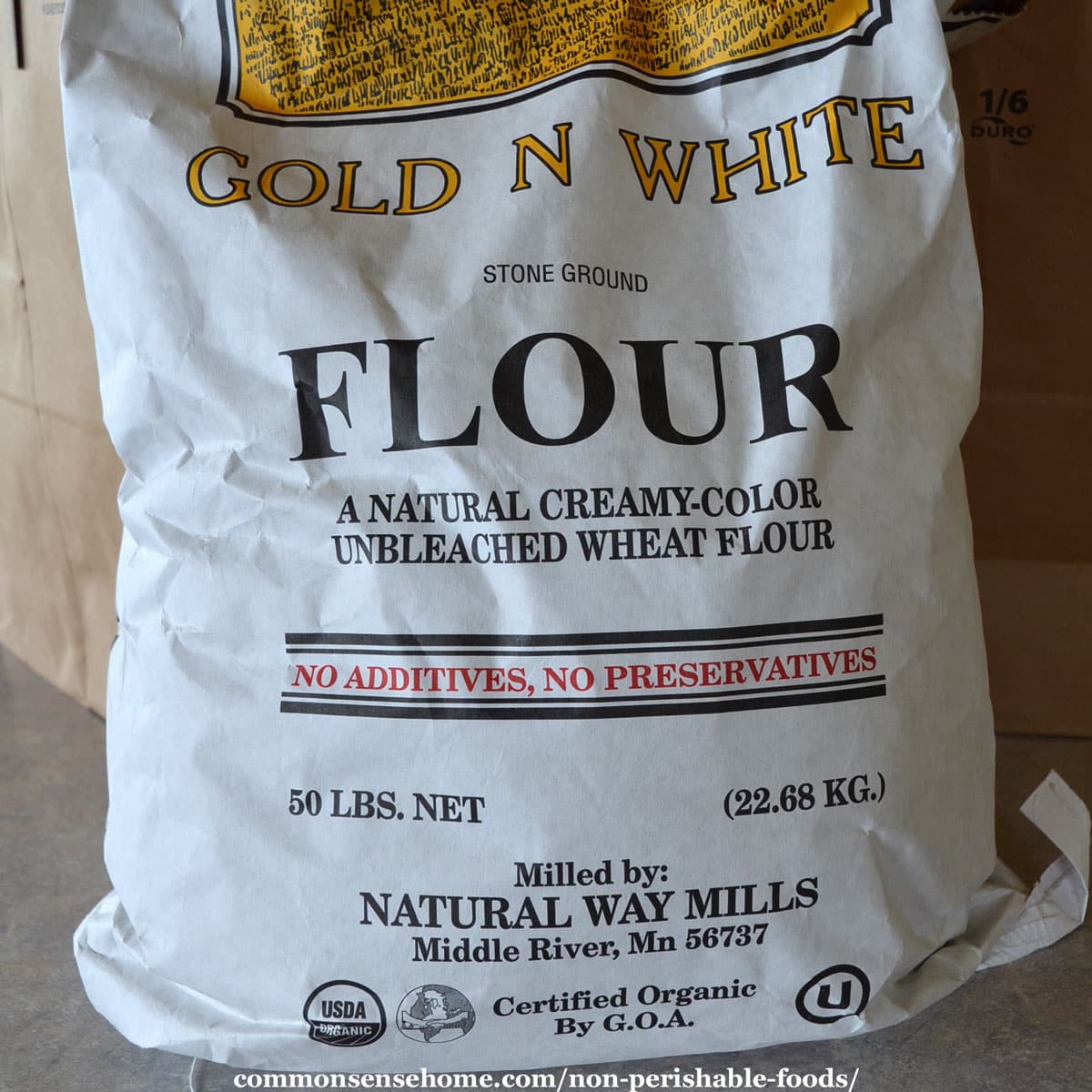
Snacks and Desserts
| Non Perishable Food | Est Shelf Life | Cost | Notes |
| Cheese (stored in fridge) | 2-4mo | Med | |
| Freeze Dried Cheddar Cheese or Cheese powder | 5-10yrs | Med to High | |
| Freeze Dried Cheese | 5-30yrs | High | Varies widely because of variable fat content. Canned freeze dried cheeses will last up to 30yrs. |
| Aged Cheddar Cheese Wheel | 1-20yrs* (normally 1-5yrs) | High | Requires 45F to 58F + controlled area for aging cheese wheels. Some require high humidity. |
| Commercial jerky | 1yr | Med- High | |
| Home made jerky | 2months | Med | |
| Freeze Dried Pudding mix | 5 to 15 years | Medium to high | Varies by type of pudding |
| Saltine Crackers | 6-9mo | Low | |
| Granola bars, protein bars, trail mix | 1yr | Low |
Survival and Emergency Foods
| Non Perishable Food | Est Shelf Life | Cost | Notes |
| Military MRE (Meals Ready to Eat) | 10-20+yrs | High | Easy to eat, lightweight. Can be stored almost anywhere (longer life if cool and dry) |
| Hardtack (survival biscuits) | FOREVER | Low | Easy to make, lasts FOREVER not great tasting |
| Pemmican | 1-5yrs | Med | Make it yourself |
| Military Chocolate Ration Bar | 3-5+ years | High | Military D Ration, D Bar and others. Longer life if sealed and kept cool. |
| USCG Ration Bar | 3-5+ years | High | Ration bars, high calorie, ready to eat |
If you want to freeze dry your own emergency foods, home freeze dryers are now available through Harvest Right. Learn more here.
Beverages and Liquids
| Non Perishable Food | Est Shelf Life | Cost | Notes |
| Shelf Stable Milk (liquid) | Up to 9months | Low- Med | |
| Freeze dried Whole milk | 1-5yrs | Med- high | Varies widely because of variable fat content. Canned freeze dried cheeses will last up to 30yrs. |
| Freeze dried Nonfat Milk | 5-20yrs | Med- high | Varies widely because of variable fat content. Canned freeze dried cheeses will last up to 30yrs. |
| Canned coconut milk | 5yrs | Med | |
| Black Tea, Oolong Tea | 18 months 24 months | Low to Medium | |
| Peach Tea, Rasp Tea mix | 18-24 months | Medium | |
| Kool-Aid, Tang drink mix | 2yrs | Low | Probably drinkable after the recommended shelf life (people have drank 10yr old but vitamins will be low or gone) |
| Ground Coffee | 3-5months | Med- High | No change in freezer |
| Coffee Beans | 6mo | Med- High | 2yrs in freezer |
| Green coffee Beans in no-oxygen | 4 to 20yrs | Med- High | Varies with type of bean and water content |
| Instant coffee (canned or freeze dried) | 1-2yrs | Med- High | store packaging |
| Freeze dried (instant) coffee (#10/Mylar) | 20-25yrs | Med- High | Long term packaging makes a big difference |
| Hard liquor & wine | Indefinite | Med- High | wines generally improve with age, clear liquors last longer (Whiskey, Vodka, Gin, Tequila, Rum) |
| Flavored Liquor and “flavored wine” | 1 to 2yrs | Med- High | Kahlua, Baileys Irish Cream and other mixed drinks |
| Hard Apple Cider | 2 to 20yrs | Med- High | Varies widely. 2yrs for “store bottle cider”, longer for specific real hard cider. It will switch over to Apple Cider Vinegar if stored too long |
| Beer – Various types last longer | 9mo to 2yrs | Low to High | Beer over a year old will probably not taste good. Store in a cool completely dark place to extend life |
What are the best non perishable foods to donate?
If possible, ask your local food pantry what non perishable foods they need the most. Normally they are grateful to be asked.
Our food bank prefers canned meats and shelf stable proteins and meals, because those are not donated as frequently. They are, of course, thankful for any donation in good condition. (Don’t donate items that are many years out of date. They can’t use them, either.)
Related Articles
- Foods to Stock Up On (for Daily Use or Emergencies)
- Home Freeze Drying
- 5 Best Freeze Dried Foods – Quality Long Term Food Storage
- Home Food Preservation – 10 Ways to Preserve Food at Home
- Emergency Cooking – 10 Ways to Have a Hot Meal When the Power Goes Out
- Storage and Shelf Life of Over-the-Counter Medication
If you have preparedness or food storage questions, leave a comment below. We also appreciate it when you share tips that have worked well for you, since we have readers from all over the world, and everyone’s situation is a little bit different.

This article is by Laurie Neverman. She has a BS in Math/Physics and MS in Mechanical Engineering with an emphasis in renewable energy. Laurie and her family live in a “concrete bunker” (ICF home) with a permaculture food forest, greenhouses, and three types of solar. They “walk the talk” of preparedness by living a more self-reliant lifestyle.

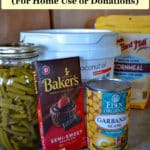
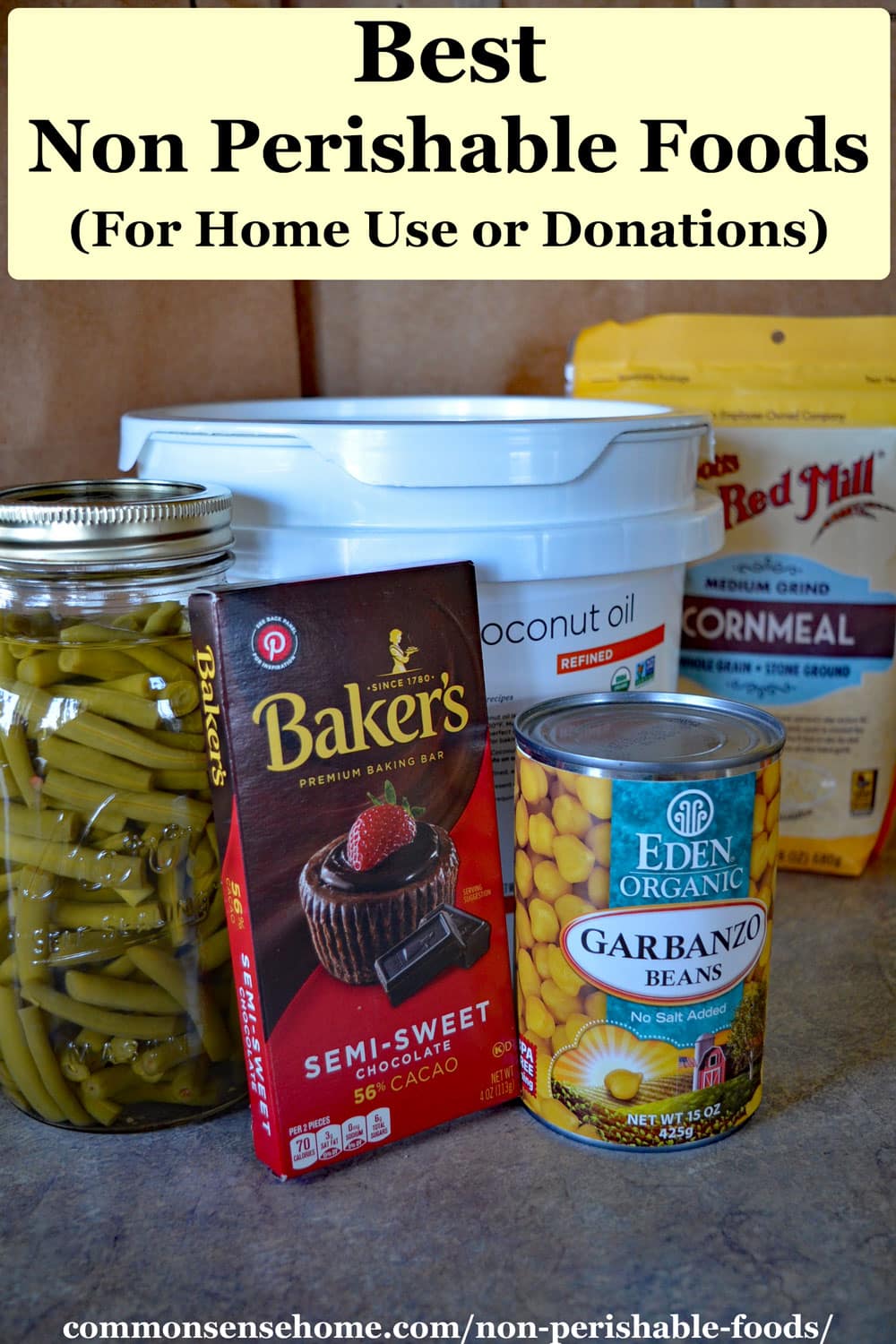

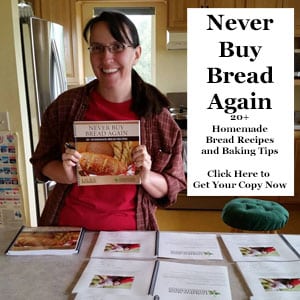
Just found your website today – lots of great ideas. My question regarding food storage is this: What very high efficiency chest freezer do you recommend? By high efficiency I’m referring to one that could be powered once or twice a day for a short time by a generator in case of electrical outage and still maintain a very low internal temperature. I’ve searched online and can find none that meet this criteria. Thanks for any suggestions.
I don’t know how low you need/want to take the temp, but SMETA sells freezers that can run off of electricity or propane and get down to 10F. If you need lower temps than that, you may need to look into scientific/industrial freezers.
Most well built chest freezers should hold food for a day or two without power if they are not opened, especially if the weather is not hot.
New to to your website and love this info! But, FYI, rolled oats go rancid after a few months unless stored in nitrogen-flushed #10 cans.
I’ll add a note on that one. We usually store in vacuum sealed containers for shorter storage, Mylar with O2 absorbers for longer storage.
Tyson Foods is recalling all its chicken because of Listeria. Therefore, every product that is made with Tyson chickens is also being recalled. Prepared sandwiches and salads with chicken from Tysons and pet foods containing Tyson chickens.
But I have noticed that it gets harder each year to find beef. Especially beef with a bone in it. The more they push artificial meat, like Burger King’s impossible burger, the less real food is available.
I think the meat processors are having a difficult time finding people who want to work in the processing plants, so they’re part of the movement pushing fake food. I know JBS has invested heavily in “plant based meat”/
Most of the foods you have listed require water to be added. I have been wondering and wondering about home canned (already has water). I know it has less nutrition than dried and freeze dried. What do you think? A mix is what I am doing.
I absolutely support including home canned food as part of your food storage. You can see one of our jars of green beans in the top photo. This post focuses mostly on purchased items, since food banks don’t accept home canned goods (and not too many people can anymore).
We can a number of different foods, including fruits, fruit spreads (jams, jellies, preserves), flower jellies, many different tomato products (spaghetti sauce, salsa, ketchup, soup, stewed tomatoes), broth, green beans, relish, pickles, and more.
The best food to store is food that you will eat, and we like to store a mix of foods to provide different tastes and textures.
Morning Laurie.
Thank you for the List for the Shelf Life of Non Perishable Foods. This was extremely helpful. Much appreciated!
Have a good day!
Good morning, Jane. You’re welcome.
Hi, have enjoyed your website. Lots of good info! What do you recommend for food storage for folks that don’t have a lot of land to grow in bulk or underground food storage? I live in a neighborhood with a decent sized raised garden bed, but a regular sized pantry. Also, are there options for above ground root cellars?
Thank you!
Hi Allison.
Check out this post for ideas for extra spots to store food and supplies outside of a pantry – https://commonsensehome.com/preparedness-storage/
And this one for above ground “root cellar” type options – https://commonsensehome.com/above-ground-root-cellars/
Even if you don’t have a lot of land to grow huge amounts of food yourself, you may be able to buy in bulk from local growers or farmers markets or even the grocery stores when they run a good sale on fresh produce. Many of our local grocery stores partner with local farmers for certain fresh foods in season, like corn, bean and apples. Buying direct from growers will usually get you the best pricing and freshest produce, but sometimes you need to work with what’s available.